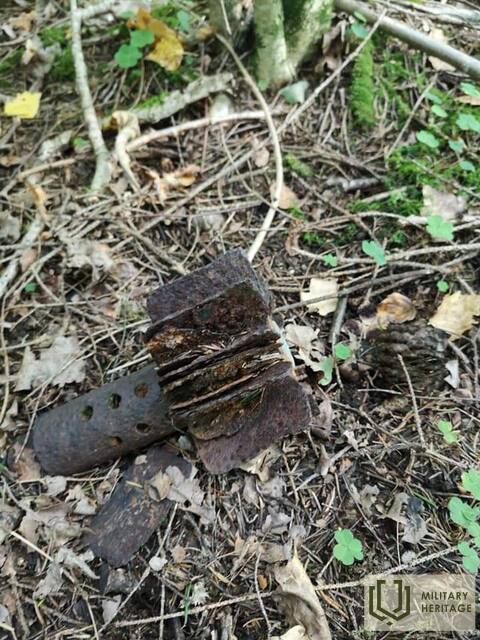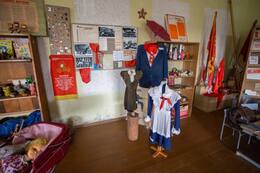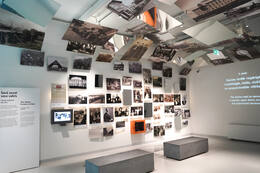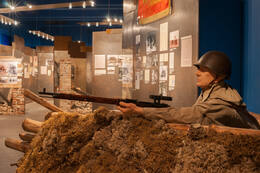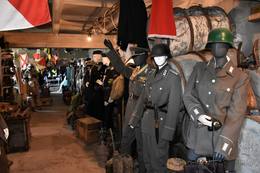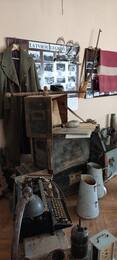Pranks and games with military ammunition
After the Second World War, the land of Latvia was full of the physical remnants of the war. It was a large number of rounds, unexploded ordnance and simple cartridges. Even today, especially in places where there has been active warfare, unexploded ordnance is found, which is very rare, while in the post-war years these charges in the forests and even in the courtyards were the everyday life of the inhabitants and even children's toys.
Neighbor and the boys were seriously fascinated by the search for artillery shells, mines and detonators. We pulled heavy there. With the neighbors, we broke them even smaller, but the bigger ones had to be screwed carefully, if you hit anything, there would be an explosion. We burned them, if they were beaten, they exploded, but they could burn them.
Then we also went to school and went to the forest patrons to read, the land was full, the moss was removed by hand, and everything was full. We were also looking for mines, they were good, we already knew where to detonate the detonator. Then we had such tricks, there was a railway line Riga Moscow. We put those assembled cartridges on the rails, and as the train crossed, there was one bang after another. Nothing happens to the train, but the bangs are big. At one point the train was stopped and then the militia caught us, even though someone had already seen what we were doing there, then we were deprived of everything we had read.
In the house I also had a lot of their patrons, but my mother didn't like it, and every time I found it, I was taken away and thrown into the pond. We also found the shells of an aviation cannon, there was one such swampy place where we walked with such a metal rod and dug into the ground, and when we hit the metal, we dug it out. At one time I was very lucky, because I had stabbed a small piece of a mine detonator with a metal rod, it would have hit, then there would have been an explosion. After that, we also dug a pit with the neighbors' boys, assembled it full of all the unloaded charges that were mostly unexploded, we also assembled the charges of an aviation cannon, we had already explored it and put it together so that something would burn and explode. But now it got louder than we expected, everything started to explode. Both the militia and the firefighters arrived, but now we had run away and looked out of the bushes. They did not come at all, waiting for the fire and explosions to subside. Then I didn't show up at home, I hid. Then there was one classmate with whom we came up with surprise mines, picked them up and put them back in the fire, there were also good explosions, and we didn't go home for a long time. That was a very topical issue for us.
When I was growing up and working in the Military Commissariat, we were called because an unexploded ordnance was found, we drove and called the Sappers, but we had to wait so long to get bogged down that my colleague and I thought we would take the mine to the Military Commissariat building. on their own. He was behind the wheel of a moped, while I was sitting in a sidecar with my mine in the lap with the detonator up to prevent it from exploding. We calmly took the mine through all of Riga and the sapper came to us, collected it and took it away, as the childhood games helped later.
Related timeline
Related objects
Exposition of historical evidence of the Tirza Parish local history repository of the USSR period
The exposition located in the former dispatch room of the collective farm was opened in 2005. Visitors are offered to experience the atmosphere of the time of the USSR in interactive lessons: discussing the Soviet period, creating legends about historical evidence, participating in choir singing, dancing "letkis", making paper airplanes and hlapushkas, thus surviving a break at school, as well as enjoying kilava buns and linden tea .
Stories and historical evidence about traditions, ancient trades and outstanding residents.
Please book your visit in advance!
For adults: 2.00 Eur
For students, pensioners: 1.00 Eur
Guided tour for up to 6 people (1-1.5 hours): 6.00 Eur
Guided tours for more than 6 people (1-1.5 hours): 1.00 Eur per person
Museum of the Occupation of Latvia
The museum exhibits the history of Latvia from 1940 to 1991, under the occupation of Nazi Germany and the Soviet Union. ‘House of the Future’ is a reconstruction and expansion project of the Occupation Museum designed by the well-known American Latvian architect Gunārs Birkerts as well as the new exhibit of the museum. The exhibit ‘History of Cheka in Latvia’ was created by the Occupation Museum and it is located in the ‘Corner House’, which is the former USSR State Security Committee (KGB) building. Latvian Occupation Museum was founded in 1993. It tells the long-hidden story of the fate of the Latvian state, nation and land under the occupation of two foreign totalitarian powers from 1940 to 1991. At the end of 2020 the museum had more than 70,000 different historical items (documents, photographs, written, oral and material evidence, objects and memorabilia). Museum specialists have recorded more than 2,400 video testimonials, making it one of the largest collections on occupation in Europe. The events that unfolded in Latvia, Lithuania and Estonia clearly show us what the nations had to endure under the two totalitarian regimes.
Latvian War Museum
The Latvian War Museum is located in the Old Town not far from the Freedom Monument in a historic defence building called the ‘Powder Tower’. There are 11 exhibits in the museum. There are various weapons, documents, uniforms, awards, badges and other items detailing the everyday life of a soldier in war. The Latvian War Museum is one of the oldest museums in Latvia. Its origins can be found in World War I. Museum’s collection was made up mainly of personal items of soldiers or items found on battlefields. After Latvia gained its independence the main goal of the museum became to create an exposition on the military history of Latvia and the active role of the population in protecting their land. In 1937 the museum was expanded and was technically one of the most modern museums in Europe at that time. The Powder Tower was one of the fortification towers of Riga. Some evidence dates back to 1330 where it has been mentioned as the ‘Sand Tower’. The tower was destroyed in 1621 when Riga was besieged by the Swedish Army. But in 1650 a new tower for storing gunpowder and weapons was built. After the city’s fortifications were taken down, the Powder Tower remains as one of the most important pieces of evidence of the Riga defence system.
Private military collection in Mundigciems
Private military collection in Mundigciems. Aivars Ormanis has been collecting historical objects for many years - military uniforms, uniforms, camouflage, communication devices, household items, protective equipment from different periods and countries, dating back to the Second World War, the Soviet army and the restoration of independent Latvia.
The collection is currently not well maintained and the exhibits are housed in a former collective farm barn.




